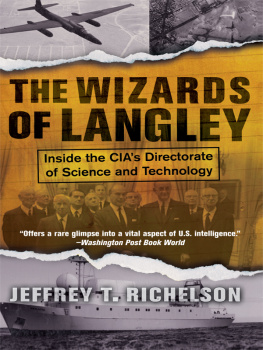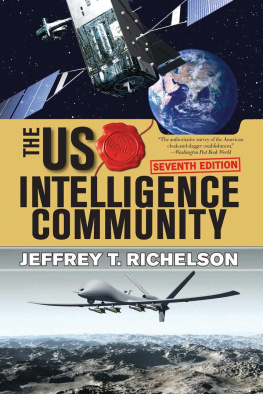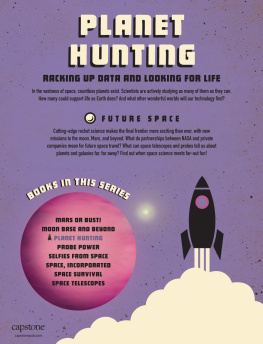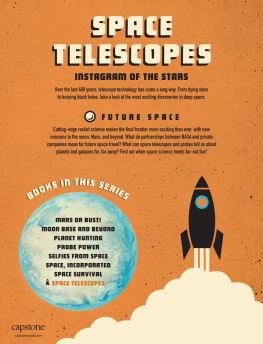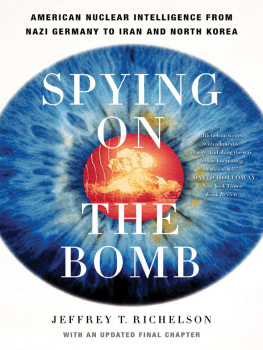Praise for The Wizards of Langley
Dr. Richelson has assembled a remarkable body of information describing the Directorate of Science and Technology at CIA, based primarily on declassified documents. With his research now available, one can begin to appreciate the extraordinary capability that was created at CIA during the Cold War and the enormous contribution DS&T made to its peaceful outcome. His account accurately portrays the tensions between the Air Force and CIA officers who created these capabilities and Robert McNamaras civilian officials who sought to annex and frustrate them.
Albert D. Wheelon, Deputy Director for
Science and Technology, CIA (19631966)
Instead of cloaks they wear lab coats, and their daggers are laser pointers. They are the men and women of CIAs Directorate of Science and Technology, the little-known organization responsible for pushing the art of spying beyond the edge of reality. In The Wizards of Langley, Jeff Richelson takes the reader behind the heavy curtain to show, for the first time, how the wizards perform their magic. It is a unique look into one of the most shadowy areas of espionage by a master of intelligence literature.
James Bamford, best-selling author of
The Puzzle Palace and Body of Secrets
The Wizards of Langley is a marvel of balance, new information, and solid research. Richelson rightly focuses on the Division of Science and Technology of the CIA, which played and plays as important a role in enhancing American security as spiesthe covert warriors who would be empty-handed had not the wizards provided the tools of the trade. Like his previous books, this one will soon be indispensable.
Thomas Powers, Author of The Man Who
Kept the Secrets: Richard Helms & the CIA
Jeffrey Richelson reads, reads, and reads some more before he writes, and its paid off, as it has in the past. The Wizards of Langley is complete in every wayan inside account of the personalities and policies that drove Americas most top-secret operations in the harrowing days of the Cold War.
Seymour Hersh
THE
WIZARDS
OF LANGLEY
Inside the CIAs Directorate
of Science and Technology
JEFFREY T. RICHELSON
All rights reserved. Printed in the United States of America. No part of this publication may be reproduced or transmitted in any form or by any means, electronic or mechanical, including photocopy, recording, or any information storage and retrieval system, without permission in writing from the publisher.
Copyright 2002 by Jeffrey T. Richelson
Westview Press books are available at special discounts for bulk purchases in the United States by corporations, institutions, and other organizations. For more information, please contact the Special Markets Department at the Perseus Books Group, 11 Cambridge Center, Cambridge MA 02142, or call (617) 252-5298 or (800) 255-1514, or e-mail
Published in 2002 in the United States of America by Westview Press, 5500 Central Avenue, Boulder, Colorado 80301-2877, and in the United Kingdom by Westview Press, 12 Hids Copse Road, Cumnor Hill, Oxford OX2 9JJ
Find us on the World Wide Web at www.westviewpress.com
A Cataloging-in-Publication data record for this book is available from the Library of Congress.
ISBN 0-8133-4059-4
eBook ISBN: 9780786742660
If ever legends and stories of American technological genius were deserved and not yet realized, they would be about scientists and engineers, the wizards of CIA and American intelligence who pioneered reconnaissance aircraft like the U-2 and SR-71, photographic satellites from the KH-4 to KH-11, an amazing array of signals intelligence satellites... people who worked brilliantly but anonymously to serve their country.
Robert Gates, November 19, 1999,
at a conference on U.S. Intelligence and the Cold War.
PREFACE
To most of the public, reference to the Central Intelligence Agency elicits visions of espionage and covert operations. To the more knowledgeable, the CIA also produces finished intelligencefrom the highly controlled Presidents Daily Brief to a multitude of less exclusive intelligence assessments. Far fewer think of the agency in terms of its efforts to exploit science and technology for intelligence purposes. Even an 800-page history of the agency, published in 1986, included only a few references to the agencys Directorate of Science and Technology. Yet, the history of that directorate is a key element in the history of both the CIA and the entire intelligence community.
The directorate has had a dramatic impact on the collection and analysis of intelligence. Several of the most important collection systems the United States operates today are direct descendants of earlier CIA programs. The directorate has designed and operated some of Americas most important spy satellites as well as the A-12 (OXCART) and U-2 spy planes, been heavily involved in the collection of signals intelligence (SIGINT), and helped pioneer the technical analysis of foreign missile and space programs. Its satellites and SIGINT activities proved vital in allowing intelligence analysts to assess the capabilities of Soviet missile systems. It is also responsible for a number of scientific advancesincluding a key component of heart pacemaker technologythat have been made available for medical and other purposes.
Of course, as might be expected of an organization that has been in existence for almost four decades and has tried to operate on the cutting edge, the directorate has not been completely free from folly. Most notably, it funded research in which alleged psychics attempted to report on activities at Soviet military facilities by viewing those activities from California. And some of its activities would win no awards from animal welfare leagues. But the directorates foresight and successes far outdistance its follies and failures.
One element of the directorates history is the hardware it designed and operated; another is the intelligence it produced through its collection and analysis activities. But at the heart of those activities were individualsmanagers, analysts, technicians, and operators. The individuals involved in the directorates early years overcame a number of obstacles, both bureaucratic and technical, that permitted the directorate to make such a significant contribution to U.S. intelligence capabilities and national security. Others who came along later were instrumental in ensuring that the directorate continued to make key contributions. In each era, a number of those individuals risked their lives in performing their missions.
As part of its celebration of its fiftieth anniversary in 1997, the CIA designated fifty individuals as CIA trailblazers. Included in the list of honorees were four of the seven Deputy Directors for Science and Technology along with numerous directorate employees who made contributions in the areas of signals intelligence, research and development, support to clandestine operations, the design and development of overhead reconnaissance systems, and imagery interpretation. Thus, this book focuses on both the activities and individuals that are crucial elements of the directorates history.
The Wizards of Langley takes the form of a chronological narrative that traces the evolution of the Directorate of Science and Technology over the almost four decades of its existence. The first chapter covers the period 19471961 and tracks the CIAs growing involvement in scientific intelligence analysis as well as the use of technology to collect intelligence. The length of the first chapter is a testament to how deeply involved the agency became in such matters during its first fifteen years. By 1961, the CIA was producing key studies of Soviet and Chinese nuclear weapons programs, operating space and aerial reconnaissance systems, and operating stations along the Soviet periphery to eavesdrop on missile tests.

